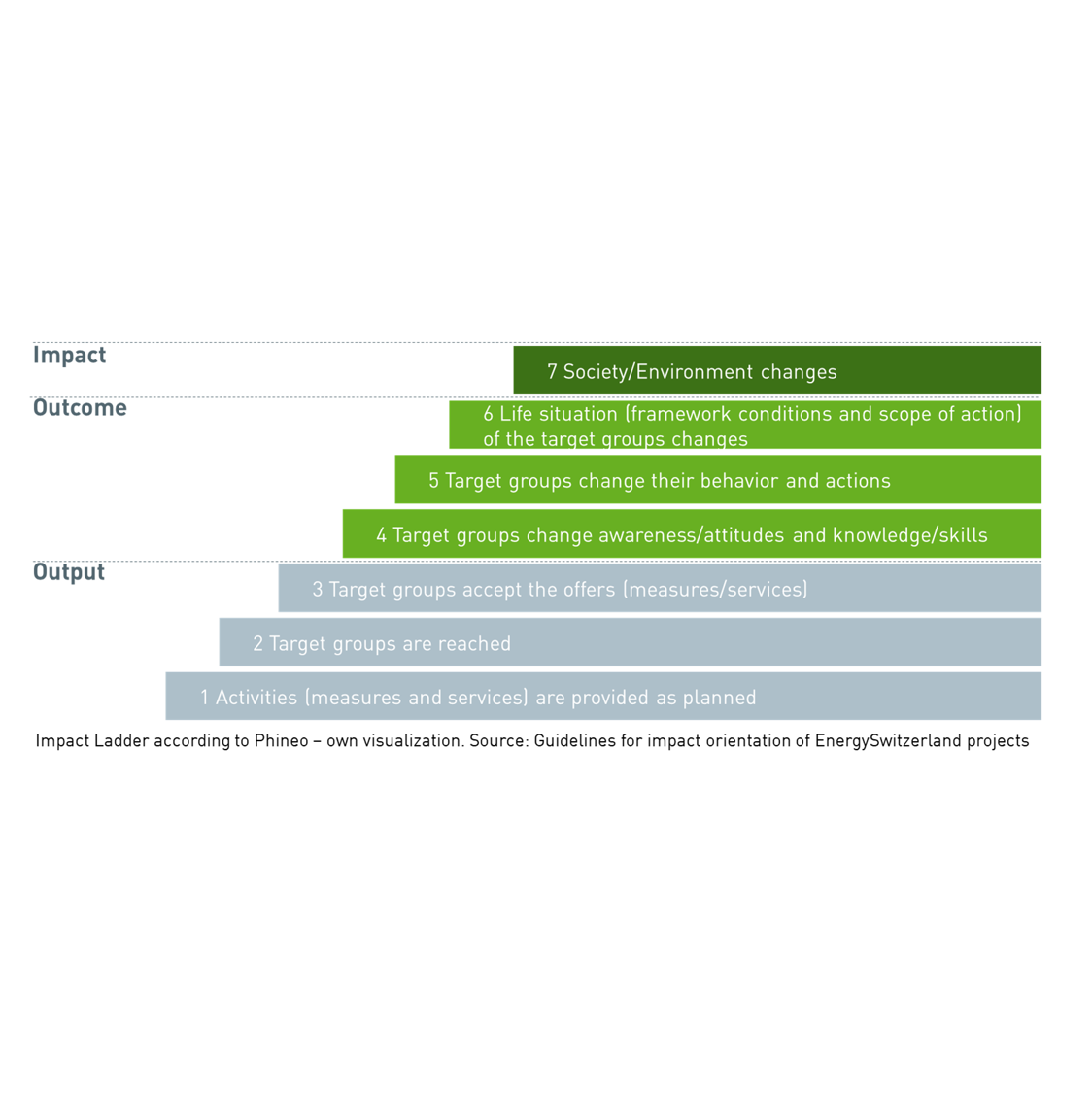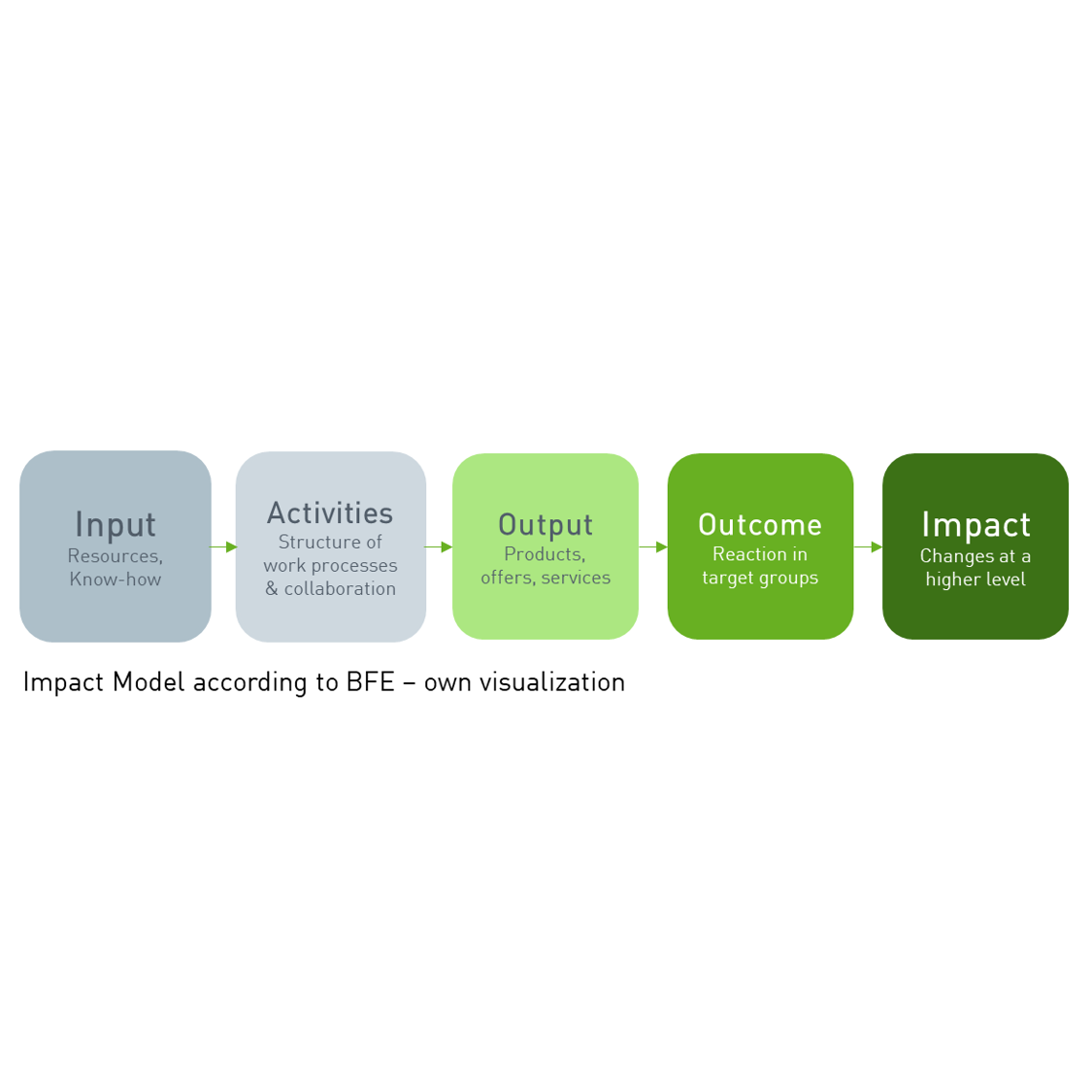To establish a shared understanding of the project goals, we developed a logic model based on a workshop and in accordance with the BFE’s guidelines on impact orientation. The model distinguishes between outputs, outcomes, and impacts (see graphic below). It ensured that all inputs and activities were aligned with the project objectives—especially the desired outcome: behavioral change within the target group.
Based on the logic model, we collaborated with the BFE to create a stakeholder map differentiating between target groups, multipliers, and other internal and external stakeholders. We segmented the target audiences, identified sample profiles, and pinpointed the behaviorally relevant “first followers” to prioritize communication measures.
To support monitoring, we defined measurable indicators for each output and outcome, proposed methods for data collection, and established concrete target values. Using the sales funnel concept, we created a tiered structure (e.g., awareness vs. actual use of the radar).
By integrating behavioral economics principles from the outset, we ensured the tool was geared toward maximizing its intended impact—behavioral change. The outcomes provide a foundation for improving effectiveness in any context where targeted engagement and activation of specific audiences are key.












